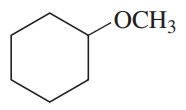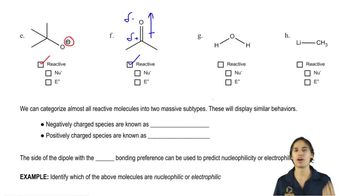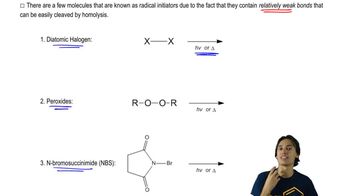Textbook Question
Starting with cyclohexane, how could the following compounds be prepared?
b.

 Verified step by step guidance
Verified step by step guidance Verified video answer for a similar problem:
Verified video answer for a similar problem:



 4:39m
4:39mMaster Heterolytic vs. Homolytic Bond Cleavage . with a bite sized video explanation from Johnny
Start learning